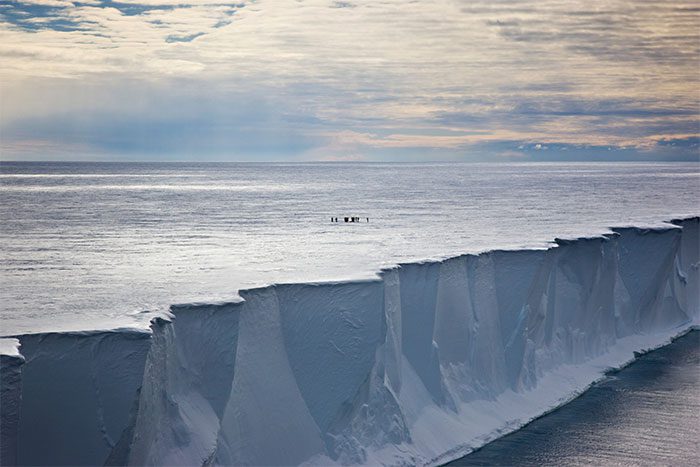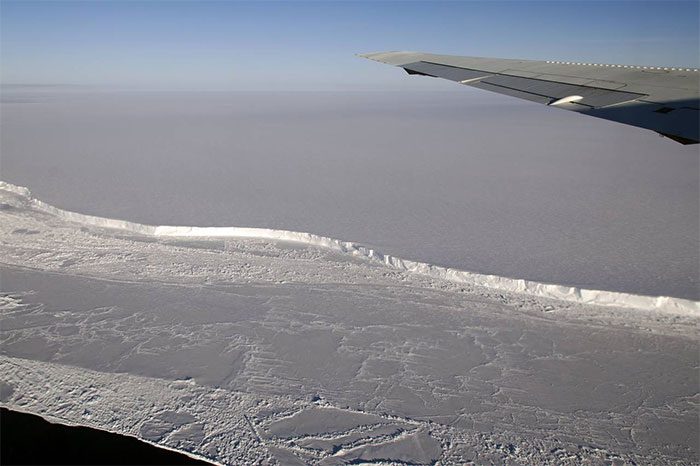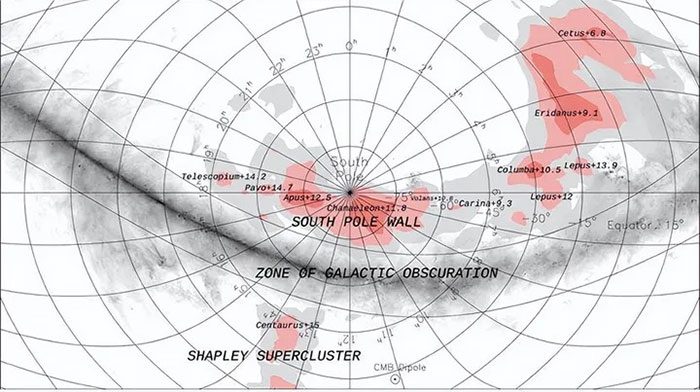There is a massive, mysterious wall stretching thousands of kilometers in Antarctica, covered by a layer of eternal ice, known as the Antarctic Wall.
How Was the Existence of the Antarctic Wall Discovered?
Antarctica has always been regarded as a polar wonder for humanity to explore, with its endless icy continent and mysterious natural landscapes. However, during a recent scientific expedition to Antarctica, scientists unexpectedly discovered an astonishing marvel – the Antarctic Wall. This discovery raises countless questions and opportunities for exploration.

The Antarctic Wall may provide us with crucial information about changes in Earth’s environment, offering a new perspective for studying climate change. (Image: ZME).
The discovery of the Antarctic Wall began with an Antarctic exploration program co-funded by the international scientific community. Scientists brought advanced detection equipment and tools to conduct detailed surveys deep into the interior of Antarctica. While performing LiDAR scans of the Antarctic ice sheet, they unexpectedly uncovered a tall and wide wall stretching hundreds of kilometers. The scientists were fascinated by this discovery and decided to investigate further.
The characteristics of the Antarctic Wall indicate that it is a magnificent glacial barrier, depicting hundreds of years of geological history. After thorough research, scientists believe that it may have formed when glaciers from the ocean moved inland over a long period.
The discovery of the Antarctic Wall has shocked the world, and scientists have devoted themselves to studying it. The existence of the Antarctic Wall provides new clues and evidence for our research on the geological age of Antarctica. By studying the rock composition of the Antarctic Wall, changes in glaciers, and seismic activity, we can gain a deeper understanding of the evolutionary processes of the Antarctic ice sheet.

The discovery of the Antarctic Wall presents new opportunities and possibilities for exploration and research in Antarctica. Scientists will continue to study the Antarctic Wall to uncover more mysteries about geological history and environmental changes. (Image: CNN).
Although the Antarctic Wall has opened up limitless exploration opportunities, it also presents environmental challenges that cannot be overlooked. The area surrounding the Antarctic Wall has been designated by the scientific community as a protected area, meaning we must take action to preserve this pristine natural environment. To achieve sustainable development, we need to establish reasonable scientific exploration plans to ensure that researchers do not cause irreparable impacts on the local ecosystem while studying the Antarctic Wall.
The Connection Between the Antarctic Wall and Earth’s Hidden Mysteries
The Antarctic Wall and the hidden mysteries of Earth are two controversial topics. Many are fascinated by these mysterious phenomena and attempt to uncover the truth behind them. The Antarctic Wall is a colossal structure located in Antarctica. Although scientists debate its authenticity, there is increasing evidence to support its existence.

Antarctica is the coldest continent (with the lowest recorded temperature of -89 degrees Celsius), the highest (with an average elevation of 2,350 meters above sea level), the driest (with an average annual precipitation of only 55mm), and the windiest (with maximum wind speeds of up to 100m/s) on Earth. In contrast, the average winter temperature in the Arctic is around -34 degrees Celsius, but it is warmer in the summer. The record for the lowest temperature ever recorded on Earth is -89.6 degrees Celsius, noted on July 21, 1983, at the Vostok Station near the South Pole. (Image: Zhihu).
There are many speculations about the function of the Antarctic Wall. Some believe it serves as a barrier protecting Earth from extraterrestrial invasions, while others suggest it is a massive energy device providing a continuous power source for Earth. These are theories that require further scientific research and validation.
Although the Antarctic Wall and the hidden mysteries of Earth may seem unrelated, some scientists have suggested a potential connection. They believe that the Antarctic Wall may hold the key to understanding the organic relationship between Earth and the hidden mysteries of existence in other universes. It is suggested that the Antarctic Wall may possess supernatural powers that interact with energy fields emanating from the hidden mysteries. If this theory is confirmed, it would significantly impact our understanding of the universe.
The Antarctic Wall and the hidden mysteries of Earth are two enigmatic and contentious subjects. Although there is still a lack of clear evidence regarding their connection, it is undeniable that many scientists have begun to investigate and explore this possibility.





















































